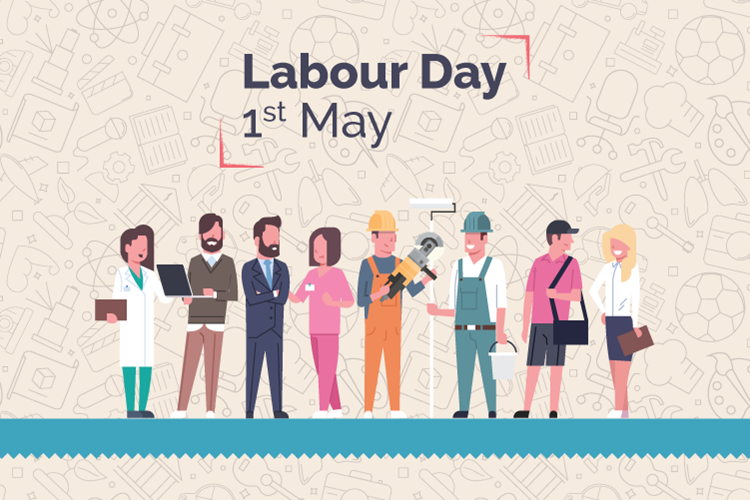- Published: 28.04.2023.
Labour Day
What are the trends in the labour market in the last five years?
For more than 130 years, the first day of May has been booked for topics related to the labour market and employee rights around the world. A higher standard of living of citizens is the purpose of all measures and policies, and statistical data relating to the labour market are certainly an essential starting point in their planning and, ultimately, their implementation.The Croatian Bureau of Statistics monitors (un)employment in two ways – by collecting data from administrative sources and by conducting the Labour Force Survey, which we will introduce you to in more detail on the occasion of this year's Labour Day.
Most comprehensive survey in the labour market area
The Labour Force Survey or LFS – as most often referred to in statistical circles – is the most comprehensive survey on the characteristics of the labour market, which is conducted on a sample of households, and its goal is to collect data on the size, structure and characteristics of the working-age population. The first Survey was conducted long ago in 1996 as an annual survey, but due to the need for more recent data, since 2007, households have been surveyed continuously throughout the year, and data are processed and published quarterly.
The Survey covers all persons who worked at least one hour in the reference week, regardless of their formal status and payment arrangements for the work performed, and therefore, a person in employment in this Survey can be a pensioner, a student or a housewife.
What trends are observed in the five-year period?
If we were to briefly describe the trends in the labour market in the last half a decade, more precisely, in the period from 2018 to 2022, that description would read: the number of persons in employment grew, the share of employed men is always slightly higher than the share of employed women, and the largest share in the total number of persons in employment belonged to persons with completed secondary school education.
According to the Labour Force Survey, there were 1.7 million persons in employment in the Republic of Croatia in 2022, which is 52 thousand, or 3.1%, more than in 2018, while the number of unemployed persons decreased by 25 thousand, or 16.2%, compared to 2018, amounting to 128 thousand in 2022. The employment rate, i.e. the percentage share of employed persons in the working-age population, was 48.7% in 2022, which is 1.8 percentage points higher than in 2018.
Observing persons in employment by sex, there were no major deviations from in the observed period compared to the trends in previous periods. The share of women in the total number of persons in employment is always slightly lower than the share of men, and in 2022, for example, it amounted to 46.2%.
In 2022, the largest share of employed men was employed in the following groups of occupations: Craft and related trades workers (21.8%), Plant and machine operators and assemblers (14.4%) and Service and sales workers (13.2%). The largest share of women was employed in Crafts and related trades (26.4%), followed by Professionals (23.7%) and Technicians and associate professionals (14.3%) in the second and third place, respectively.
In the past five years, there have been no significant changes in the share of persons in employment by educational attainment. However, in 2022, compared to 2018, a decrease in the share of persons in employment with completed basic and lower education was observed, a slight increase in the share of persons in employment with secondary school education, while the share of those with higher education remained almost unchanged.
Slight decline in average number of working hours in the reference week
Due to a change in the methodology in 2021, there was a break in the time series of indicators of working hours, so data from 2018 to 2022 cannot be compared continuously. However, if we compare 2022, in which we worked an average of 37.7 hours per week, with the previous year, a slight decline is visible. On average, there were 37.9 working hours per week in 2021.
And what is going on at the EU level?
According to the Eurostat data, there were 202.8 million persons in employment at the EU-27 level in 2022, and men accounted for the greater share, more precisely, 53.7% of them. The employment rate in the European Union was 54.1%. The country where this rate was the lowest, namely 45.1%, was Italy, while the highest – 71.8% – was recorded in Iceland. Observing the average weekly working hours, Greece was the country with the largest number of them – 39.7 – and the Netherlands with the lowest – 30.8. The European average was 35.9 working hours per week.

